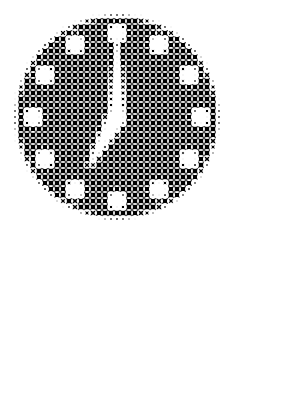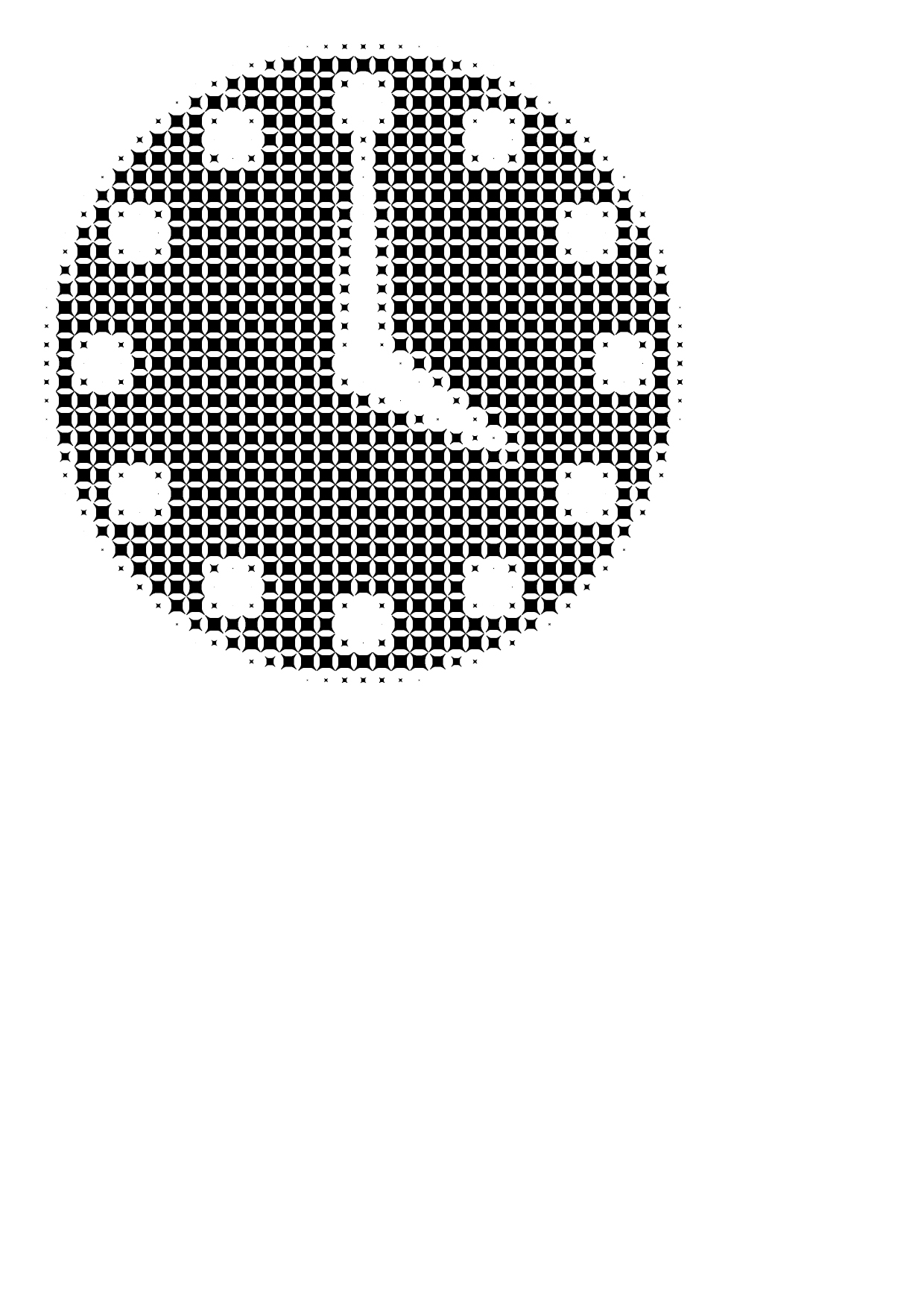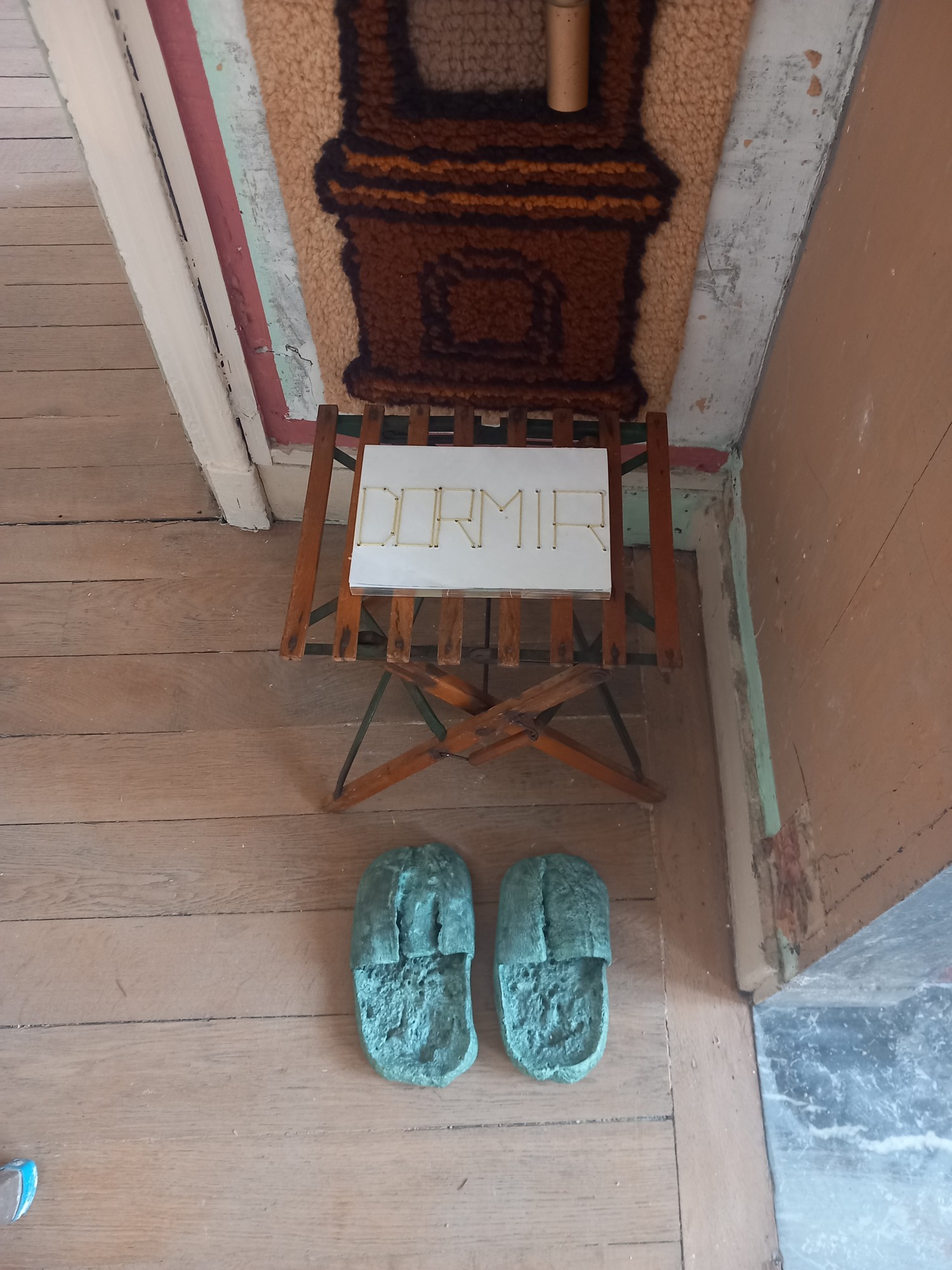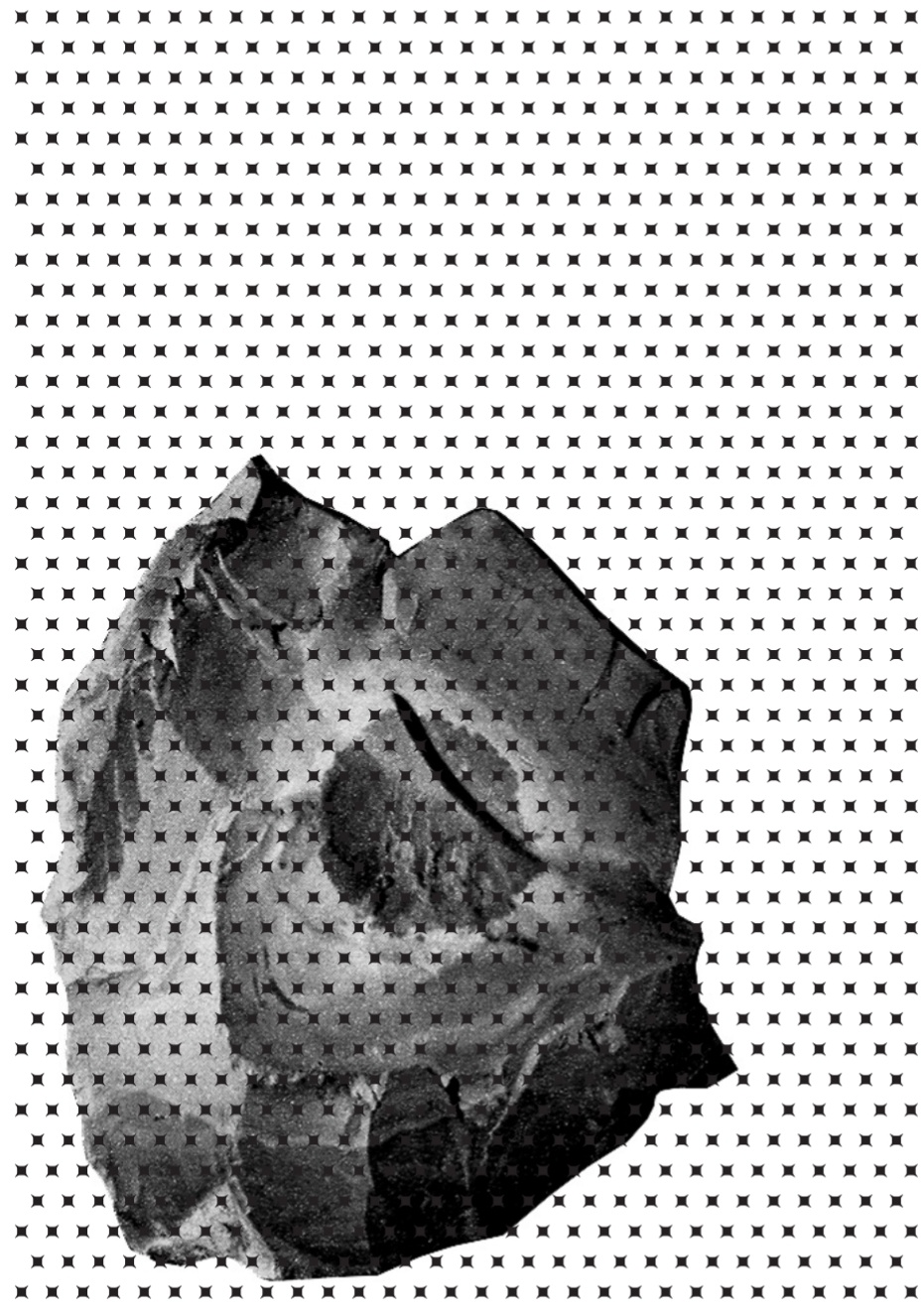La Fugitive

“La Fugitive”, exhibition view. Photo: Marc Domage / le Crédac, 2022 From left to right: G.B. Jones, Cruising #2, 1988. Graphite pencil on paper; G.B. Jones, Motorcycle girls, 1987. Graphite pencil on paper; G.B. Jones, Stop! Don’t miss this, 1990. Graphite pencil on paper. All works by G.B. Jones are courtesy of Cooper Cole, Toronto ; (floor) Marc Camille Chaimowicz, A Partial Vocabulary, 1984-2008. Plywood, fabric, carpet, hand-tufted Tisca. Courtesy: FRAC Nouvelle-Aquitaine MÉCA; (on the wall) Marie Laurencin, La vie de château, (n.d.). Print, Marie Laurencin, La vie de château, (n.d.). Print; Marie Laurencin, La vie de château, (n.d.). Print; Marie Laurencin, Femmes à une fenêtre, (n.d.). Print. All works by Marie Laurencin are courtesy of the Musée d’art moderne de Paris. Marie Laurencin / Adagp, Paris, 2022; Anne Bourse, Rage, 2022. Ink and pencil on evening, courtesy of the artist and Crèvecœur, Paris; Mélissa Boucher and Adèle de Keyzer, Mauvais genre, 2022. Cyanotypes on silk, cotton mesh. Courtesy of the artists. Mélissa Boucher / Adagp, Paris, 2022

“La Fugitive”, exhibition view. Photo: Marc Domage / le Crédac, 2022 From left to right: G.B. Jones, Cruising #2, 1988. Graphite pencil on paper; G.B. Jones, Motorcycle girls, 1987. Graphite pencil on paper; G.B. Jones, Stop! Don’t miss this, 1990. Graphite pencil on paper. All works by G.B. Jones are courtesy of Cooper Cole, Toronto ; (floor) Marc Camille Chaimowicz, A Partial Vocabulary, 1984-2008. Plywood, fabric, carpet, hand-tufted Tisca. Courtesy: FRAC Nouvelle-Aquitaine MÉCA; (on the wall) Marie Laurencin, La vie de château, (n.d.). Print, Marie Laurencin, La vie de château, (n.d.). Print; Marie Laurencin, La vie de château, (n.d.). Print; Marie Laurencin, Femmes à une fenêtre, (n.d.). Print. All works by Marie Laurencin are courtesy of the Musée d’art moderne de Paris. Marie Laurencin / Adagp, Paris, 2022

“La Fugitive”, exhibition view. Photo: Marc Domage / le Crédac, 2022 Foreground : Mélissa Boucher and Adèle de Keyzer, Mauvais genre, 2022. Cyanotypes on silk, cotton mesh. Courtesy of the artists. Mélissa Boucher / Adagp, Paris, 2022 Background: works by Lena Vandrey, Marc Camille Chaimowicz and G.B. Jones.

“La Fugitive”, exhibition view. Photo: Marc Domage / le Crédac, 2022 Foreground: Marc Camille Chaimowicz, A Partial Vocabulary, 1984-2008. Plywood, fabric, hand-tufted Tisca. Courtesy: FRAC Nouvelle-Aquitaine MÉCA. Background, from left to right : Zoe Williams, Piss in Boots (Living Currency Parlour set), 2022. Glazed ceramic. Courtesy of the artist and Ciaccia Levi, Paris - Milan; (in the window) Anne Bourse, Rage, 2022. Ink and pencil on silk, courtesy of the artist and Crèvecœur, Paris; (on the floor) Zoe Williams, Salmon Heel, 2019. Ceramic, fur. Courtesy of the artist and Ciaccia Levi, Paris - Milan. Back row: Zoe Williams, Carol Rama shoe, 2019. Ceramic, fur. Courtesy of the artist and Ciaccia Levi, Paris - Milan ; (wall installation) Works by Lena Vandrey, installation present in the back right corner of the room named by the artist “Le Cabinet de Curiosités” of her museum in Bourg-Saint-Andéol. All works by Lena Vandrey are courtesy of Musée des Anges - Lena Vandrey, Bourg-Saint-Andéol. Lena Vandrey / Adagp, Paris, 2022

“La Fugitive”, exhibition view. Photo: Marc Domage / le Crédac, 2022 Zoe Williams, Piss in Boots (Living Currency Parlour set), 2022. Glazed ceramic. Courtesy of the artist and Ciaccia Levi, Paris - Milan ; (in the window) Anne Bourse, Rage, 2022. Ink and pencil on silk, courtesy of the artist and Crèvecœur, Paris; (on the floor) Zoe Williams, Salmon Heel, 2019. Ceramic, fur. Courtesy of the artist and Ciaccia Levi, Paris - Milan. Back row: Zoe Williams, Carol Rama shoe, 2019. Ceramic, fur. Courtesy of the artist and Ciaccia Levi, Paris - Milan.

“La Fugitive”, exhibition view. Photo: Marc Domage / le Crédac, 2022 Zoe Williams, Piss in Boots (Living Currency Parlour set), 2022. Glazed ceramic. Courtesy of the artist and Ciaccia Levi, Paris - Milan.

“La Fugitive”, exhibition view. Photo: Marc Domage / le Crédac, 2022 (at the window) Anne Bourse, Rage, 2022. Ink and pencil on silk, courtesy of the artist and Crèvecœur, Paris; (on the floor) Zoe Williams, Salmon Heel, 2019. Ceramic, fur. Courtesy of the artist and Ciaccia Levi, Paris - Milan. Background: Zoe Williams, Carol Rama shoe, 2019. Ceramic, fur. Courtesy of the artist and Ciaccia Levi, Paris - Milan.

“La Fugitive”, exhibition view. Photo: Marc Domage / le Crédac, 2022 (at the window) Anne Bourse, Rage, 2022. Ink and pencil on evening, courtesy of the artist and Crèvecœur, Paris; (on the floor) Zoe Williams, Salmon Heel, 2019. Ceramic, fur. Courtesy of the artist and Ciaccia Levi, Paris - Milan. Background: Zoe Williams, Carol Rama shoe, 2019. Ceramic, fur. Courtesy of the artist and Ciaccia Levi, Paris - Milan ; (wall installation) Works by Lena Vandrey, installation present in the back right corner of the room named by the artist “Le Cabinet de Curiosités” of her museum in Bourg-Saint-Andéol. All works by Lena Vandrey are courtesy of Musée des Anges - Lena Vandrey, Bourg-Saint-Andéol. Lena Vandrey / Adagp, Paris, 2022

Works of Lena Vandrey, installation present in the back right corner of the room named by the artist “The Cabinet of Curiosities” of his museum in Bourg-Saint-Andéol. From left to right: Construction, 2007, Sculpture on Wooden Easel, Cycle Cut-Outs, 1983-2013. Mixed media, cardboard, trace of paint, oil pastels, acrylic, gouache, oil pastels; Persona I, Cycle Cut-Outs, 1983-2013. Mixed media, wood frame, cardboard, pencils, oil pastels, acrylic, gouache; Persona II, Cycle Cut-Outs, 1983-2013. Mixed media, antique frame, cardboard, pencils, oil pastels, acrylics, gouache; Stone’s Head, 2008, Cycle Cut-Outs, 1983-2013. Mixed media, wooden frame, cardboard, pencils, oil pastels, acrylic, gouache; The Inessentials II, 2006, Cycle Drawings, 2005-2015. Mixed media, antique frame, cardboard, pencils, oil pastels, acrylic, gouache; Prie-Dieu, Cycle Installations Muséales, 1968-2018. Wooden structure, rope braiding, early 20th century provincial craftsmanship. Persona III, Cycle Cut-Outs, 1983-2013. Mixed media, antique frame, cardboard, pencils, oil pastels, acrylic, gouache; Persona IV, Cycle Cut-Outs, 1983-2013. Mixed media, antique frame, cardboard, pencils, oil pastels, acrylic, gouache. All works by Lena Vandrey are courtesy of Musée des Anges - Lena Vandrey, Bourg-Saint-Andéol. Lena Vandrey / Adagp, Paris, 2022

“La Fugitive”, exhibition view. Photo: Marc Domage / le Crédac, 2022 (at the window) Anne Bourse, Rage, 2022. Ink and pencil on evening, courtesy of the artist and Crèvecœur, Paris; (on the floor) Carol Rama shoe, 2019. Ceramic, fur. Courtesy of the artist and Ciaccia Levi, Paris - Milan ; (wall installation) Works by Lena Vandrey, installation present in the back right corner of the room named by the artist “Le Cabinet de Curiosités” of her museum in Bourg-Saint-Andéol. All works by Lena Vandrey are courtesy of Musée des Anges - Lena Vandrey, Bourg-Saint-Andéol. Lena Vandrey / Adagp, Paris, 2022

“La Fugitive”, exhibition view. Photo: Marc Domage / le Crédac, 2022 Mélissa Boucher and Adèle de Keyzer, Mauvais genre, 2022. Cyanotypes on silk, cotton mesh. Courtesy of the artists. Mélissa Boucher / Adagp, Paris, 2022; Chantal Akerman, La Chambre, 2012. Video installation, 5 monitors, 16mm film, digitized, color 10 min 26 sec, on loop. Courtesy Chantal Akerman Foundation and Marian Goodman Gallery © Chantal Akerman / Adagp, Paris, 2022

“La Fugitive”, exhibition view. Photo: Marc Domage / le Crédac, 2022 From left to right: Cécile Bouffard, fugitive, 2022. Wood, acrylic paint, textile, wire, adhesive. Courtesy of the artist; Cécile Bouffard, Smothered Good, 2022. Wood, acrylic paint, latex, iron wire, silicone; Autumn Ramsey, Venus, 2022. Oil paint on canvas. Courtesy of the artist and Crèvecœur, Paris; Cécile Bouffard, pursuit of Happiness, 2022. Wood, acrylic paint, iron wire. Courtesy of the artist. Marcel Devillers, Je suis Jessica, dis-je, 2022. Installation. Wood, lacquer, light bulbs, headphones, sound recording, sheets of paper, tape. Courtesy of the artist.

“La Fugitive”, exhibition view. Photo: Marc Domage / le Crédac, 2022 From left to right: Autumn Ramsey, Seized, 2017. Oil paint on canvas. Courtesy of the artist and Crèvecœur, Paris; Pauline Boudry / Renate Lorenz, Wig Piece (Entangled Phenomena VI), 2019. Felt, artificial hair, metal. Courtesy of the artists, Marcelle Alix, Paris and Ellen de Bruijne Projects, Amsterdam; Cécile Bouffard, fugitive, 2022. Wood, acrylic paint, textile, iron wire, adhesive. Courtesy of the artist; Cécile Bouffard, Smothered Good, 2022. Wood, acrylic paint, latex, iron wire, silicone. Courtesy of the artist; Autumn Ramsey, Venus, 2022. Oil paint on canvas. Courtesy of the artist and Crèvecœur, Paris.

“La Fugitive”, exhibition view. Photo: Marc Domage / le Crédac, 2022 From left to right: Cécile Bouffard, …still baffled, 2022. Wood, acrylic paint, iron wire, textile. Courtesy of the artist; Pauline Boudry / Renate Lorenz, Wig Piece (Entangled Phenomena VI), 2019. Felt, artificial hair, metal. Courtesy of the artists, Marcelle Alix, Paris and Ellen de Bruijne Projects, Amsterdam; Cécile Bouffard, fugitive, 2022. Wood, acrylic paint, textile, iron wire, adhesive. Courtesy of the artist.

“La Fugitive”, exhibition view. Photo: Marc Domage / le Crédac, 2022 Foreground : Marcel Devillers,Je suis Jessica, dis-je, 2022. Installation. Wood, lacquer, light bulbs, headphones, sound recording, sheets of paper, tape. Courtesy of the artist. Background: Autumn Ramsey, Seized, 2017. Oil paint on canvas. Courtesy of the artist and Crèvecœur, Paris; Cécile Bouffard, Smothered Good, 2022. Wood, acrylic paint, latex, iron wire, silicone. Courtesy of the artist; Cécile Bouffard, …still baffled, 2022. Wood, acrylic paint, iron wire, textile. Courtesy of the artist; Tirdad Hashemi and Soufia Erfanian, Your memory stays in my heart like blood stains, 2021. Mixed media on paper. Courtesy of the artists and gb agency, Paris; Cécile Bouffard, fugitive, 2022. Wood, acrylic paint, textile, iron wire, adhesive. Courtesy of the artist; Cécile Bouffard, Smothered Good, 2022. Wood, acrylic paint, latex, iron wire, silicone. Courtesy of the artist; Autumn Ramsey, Venus, 2022. Oil paint on canvas. Courtesy of the artist and Crèvecœur, Paris; Cécile Bouffard, pursuit of Happiness, 2022. Wood, acrylic paint, iron wire. Courtesy of the artist.

“La Fugitive”, exhibition view. Photo : Marc Domage / le Crédac, 2022 Foreground : Marcel Devillers, Je suis Jessica, dis-je, 2022. Installation. Wood, lacquer, light bulbs, headphones, sound recording, sheets of paper, tape. Courtesy of the artist. Background, left to right: Autumn Ramsey, A bloom, 2020. Oil paint on canvas. Courtesy of the artist and Crèvecœur, Paris; Mélissa Boucher, Scrolling, 2021-2022. Silver photographs, inkjet prints of varying sizes, dielectric glass, steel frame. Courtesy of the artist. © Mélissa Boucher / Adagp, Paris, 2022; Autumn Ramsey, Seized, 2017. Oil paint on canvas. Courtesy of the artist and Crèvecœur, Paris

“La Fugitive”, exhibition view. Photo: Marc Domage / le Crédac, 2022 From left to right: Cécile Bouffard, …still baffled, 2022. Wood, acrylic paint, iron wire, textile. Courtesy of the artist; Tirdad Hashemi and Soufia Erfanian, Your memory stays in my heart like blood stains, 2021. Mixed media on paper. Courtesy of the artists and gb agency, Paris; Cécile Bouffard, fugitive, 2022. Wood, acrylic paint, textile, iron wire, adhesive. Courtesy of the artist.

“La Fugitive”, exhibition view. Photo: Marc Domage / le Crédac, 2022 Left: Jean de Sagazan, The Last dance 6.4, 2020. Acrylic, dye on cotton and Jean de Sagazan, The Last dance 6.5, 2020. Acrylic, dye on cotton. Courtesy of the artist. Right: works by Tirdad Hashemi and Soufia Erfanian: I have never spoken my truth, 2021; Now I’m stuck again in the room of your memories, 2021. Private collection; Kissing you is like jumping in a pool of cream, 2021. Private collection; Every day and night the sound of my trauma is deafening my ears, 2021; All works by Tirdad Hashemi and Soufia Erfanian are mixed media on paper, and unless otherwise noted, are courtesy of the artists and gb agency, Paris.

“La Fugitive”, exhibition view. Photo : Marc Domage / le Crédac, 2022 Works by Tirdad Hashemi et Soufia Erfanian. From left to right : I have never spoken my truth, 2021 ; Now I’m stuck again in the room of your memories, 2021. Private collection ; Kissing you is like jumping in a pool of cream, 2021. Private collection ; Every day and night the sound of my trauma is deafening my ears, 2021 ; The safest place to find is behind your hair, 2021 ; Your memory stays in my heart like blood stains, 2021. All works by Tirdad Hashemi and Soufia Erfanian are mixed media on paper, and unless otherwise noted, are courtesy of the artists and gb agency, Paris.

“La Fugitive”, exhibition view. Photo: Marc Domage / le Crédac, 2022 Jean de Sagazan, The Last dance 6.4, 2020. Acrylic, dye on cotton; Jean de Sagazan, The Last dance 6.5, 2020. Acrylic, dye on cotton. Courtesy of the artist.

“La Fugitive”, exhibition view. Photo: Marc Domage / le Crédac, 2022 Pauline Boudry / Renate Lorenz, Opaque, 2014. Super 16mm film. HD video. 10 min. Courtesy of the artists, Marcelle Alix, Paris and Ellen de Bruijne Projects, Amsterdam

“La Fugitive”, exhibition view. Photo: Marc Domage / le Crédac, 2022 Pauline Boudry / Renate Lorenz, Opaque, 2014. Super 16mm film. HD video. 10 min. Courtesy of the artists, Marcelle Alix, Paris and Ellen de Bruijne Projects, Amsterdam

“La Fugitive”, exhibition view. Photo: Marc Domage / le Crédac, 2022 Pauline Boudry / Renate Lorenz, Opaque, 2014. Super 16mm film. HD video. 10 min. Courtesy of the artists, Marcelle Alix, Paris and Ellen de Bruijne Projects, Amsterdam























Artists: Chantal Akerman, Mélissa Boucher, Pauline Boudry / Renate Lorenz, Cécile Bouffard, Anne Bourse, Marc Camille Chaimowicz, Jean de Sagazan, Marcel Devillers, Tirdad Hashemi et Soufia Erfanian, G.B. Jones, Ana Jotta, Marie Laurencin, Autumn Ramsey, Lena Vandrey, Zoe Williams
Curatorship: Ana Mendoza Aldana in collaboration with Claire Le Restif
La Fugitive is the sixth tome of Marcel Proust’s In Search of Lost Time 1. This exhibition gives substance to the character of Albertine, channeling both iconic and previously unreleased works. First a young woman in her domestic space, she builds her journey in real and dreamed realms unknown to the Proust narrator.
Albertine appears for the first time on the beach at Balbec, in the middle of a group of athletic and impudent jeunes filles en fleur (young girls in flower). Starting with this second volume of Marcel Proust’s À la recherche du temps perdu (In Search of Lost Time, also translated as Remembrance of Things Past), Albertine becomes the novel’s most referenced character. An object of the narrator’s passion, covetousness and jealousy, Albertine is a strong and self-assured women, yet she remains elusive, her character always slipping out of our grasp.
She has few spoken lines in this narrative, yet remains the subject and master of her actions. Throughout this and the subsequent volumes, she sows confusion about her motivations and personality rather than enlightening the narrator and readers. Ultimately, her character is as secret as it is complex.
As the novel unfolds, it becomes clear that Albertine loves women and this sensuality that she constantly reveals comes to obsess the narrator.
Many artists, in their practice, address the questions raised by the figure of Albertine in À la recherche du temps perdu and by her treatment at the hands of literary critics who refuse to see her as anything but the fictional embodiment of real-world male characters in Proust’s life. Challenging a visual culture inherited from the male gaze, rejecting the immutability of forms and foregrounding queer people, these artistic interrogations advance a perhaps more complex and polysemic way to see things and the world.
The exhibition La Fugitive seeks to reembody Albertine through emblematic works by contemporary artists and pieces produced specially for this exhibition. They constitute a journey from the young girl’s domestic space to the both real and fantasized milieux that in this book slip away from the narrator’s inquisitorial and voyeuristic gaze.
Video(s)
Video-interview of the exhibition La Fugitive. Direction and editing: Thomas James.
© le Crédac, 2022
Artists biography
-
Chantal Akerman is internationally recognized for her cinematographic work. From her early days until her death, she never ceased to reinvent her formal vocabulary and her view of the world, navigating with unparalleled freedom from feature-length fiction to documentary, from comedy to drama, and even to video installation.
-
Mélissa Boucher is a Franco-Bolivian artist practicing photography, video and producing artist’s editions. Through her photographs, she seeks to capture the narrative potential of scenes, spaces, or interior arrangements. She is interested in the sideways, seemingly secondary objects or forms opening a space of play between documentary narrative and fiction.
-
A duo of artists working together since 2007, Pauline Boudry / Renate Lorenz create video installations on the history of queer people.
-
Cécile Bouffard’s sculptural work invites one to project oneself into the object, such an outline incites a gesture, a grip, a touch, such a curve a caress. Her objects are arranged with folkloric signs inviting the recognition of a certainty that can tip over into fragility as soon as the gaze is moved.
-
Anne Bourse practices drawing. Her swirling lines and letters invade the surface of books, clothes and papers of all kinds. Her work is above all punctuated by the
continuous movement of a writing of oneself. -
Marc Camille Chaimowicz distinguished himself in an era of austere minimalism by his unbridled quest for beauty, establishing himself in the 1970s with playful and seductive art. His scattered post-pop environments owed as much to glam rock as they did to art practice, and drew on modern French literature and art theory.
-
Jean de Sagazan is a painter. Passionate about cinema, he pays particular attention to the question of the motif. His recent paintings represent the memories of a night, of a war with the invisible enemy, of bodies freed from norms, of a dancing and joyful crowd, but also of monads closed under the effects of ecstasy and of libertines thirsty for tenderness.
-
Marcel Devillers is an artist and poet. His sculpture and installation work, as well as his writings, are interested in the milieu of the stage and the night.
-
Tirdad Hashemi and Soufia Erfanian practice drawing and painting. The work of this Iranian couple, influenced by their multiple displacements over the years, focuses on the creation of a “home”. Art is their only necessity, their true home, the only place where they can fully express themselves, where they can be both themselves and others, because in this space, everything is still possible.
-
G.B. Jones is an artist, filmmaker and musician, founder of the all-female post-punk band Fifth Column, a band at the heart of the Toronto-based Queercore scene (also known as Homocore), which she created from scratch with Bruce LaBruce. She is the author of many Tom of Finland inspired drawings featuring female characters in a hyper masculine setting.
-
Ana Jotta develops a protean work exploring painting, sculpture, photography, and installation, as well as techniques traditionally associated with the minor arts. She thus dismantles the idea of a univocal and recognizable style. She collects objects, iconography and titles from other artists and redefines her own work with each new exhibition.
-
Marie Laurencin is a pioneer of Dadaism and Cubism. Her works illustrate young girls and androgynous teenagers. A lesbian figure of the beginning of the XXe her work is more transgressive than it seems.
-
Autumn Ramsey’s painting borrows from the Ovidian Metamorphoses and the symbolist heritage of Gustave Moreau. The bestiary that populates her work fluctuates between the human, the animal and the vegetable. The characters are androgynous and inspire fear as much as desire or attraction.
-
Friend of Monique Wittig and Niki de Saint Phalle, collected by Dubuffet, model for Ungaro, Lena Vandrey is a singular figure. In her paintings, sculptures, poems and installations, the fragility of Angels rubs shoulders with the vitality of Amazons. Her house-museum in Bourg-Saint-Andéol reveals her desire to create a total work of art intrinsically linked to her intimate life.
-
Zoe Williams’ sculptures, drawings, and videos evolve at the edge of attraction, seduction, and the grotesque. Fantasies are explored from a female perspective. Her multi-disciplinary works (drawings, video, sculpture) share a pastel and colorful aesthetic, where transgression takes place in a frontal way.
Curator biography
-
Born in Guatemala, Ana Mendoza Aldana is a curator and art critic living and working in Paris. After ten years of experience in galleries (Triple V and Air de Paris), she is since 2020 the Head of Communication, Editions and Curatorial Research at the Centre d’art contemporain d’Ivry - le Crédac.
Her writings are particularly interested in painting and stories. The exhibitions she has produced often take as their starting point a literary work that she uses to shed a different light on contemporary artistic practices and the urgencies of the present.









